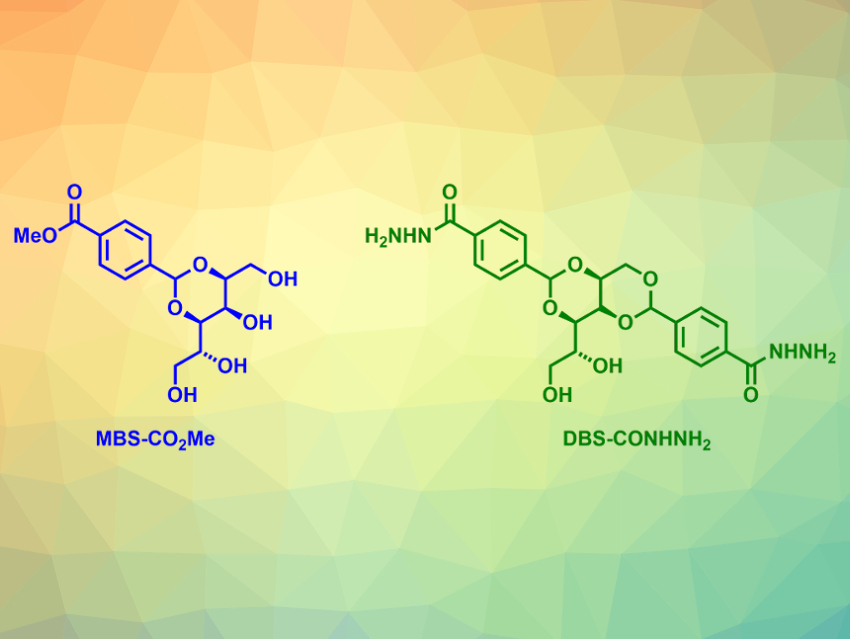Supramolecular hydrogels have a high water content and are often biocompatible, which makes them interesting for biomedical applications such as drug delivery. However, they tend to have a low mechanical stability, which makes them difficult to handle. Supramolecular hydrogels are composed of water that is captured in a network of hydrophilic fibers. The network is formed from gelator molecules, which are held together by non-covalent interactions.
Anna K. Patterson and David K. Smith, University of York, UK, have developed a hybrid hydrogel composed of two different supramolecular gelators. The material combines controlled drug release with improved mechanical stability. The team used DBS-CONHNH2 (pictured in green, DBS = dibenzylidenesorbitol) and MBS-CO2Me (pictured in blue, MBS = monobenzylidenesorbitol) as gelators, which were converted to a hydrogel by adding water to a mixture of the two components, followed by a heat-cool cycle. During cooling, the components form transparent gels.
The team added the drug naproxen during the gel formation to obtain drug-loaded hybrid hydrogels. The DBS-CONHNH2 component interacts with the carboxylic acid group of naproxen, which allows for a controlled, pH-dependent release of the drug. The MBS-CO2Me component leads to a stiffer, more mechanically robust hydrogel that is easier to handle than a pure DBS-CONHNH2 hydrogel. The developed multi-component hydrogels could be further tuned to achieve suitable properties for the delivery of other drugs or for other biomedical applications, such as tissue engineering.
- Two-component supramolecular hydrogel for controlled drug release,
Anna K. Patterson, David K. Smith,
Chem. Commun. 2020.
https://doi.org/10.1039/d0cc03962d



